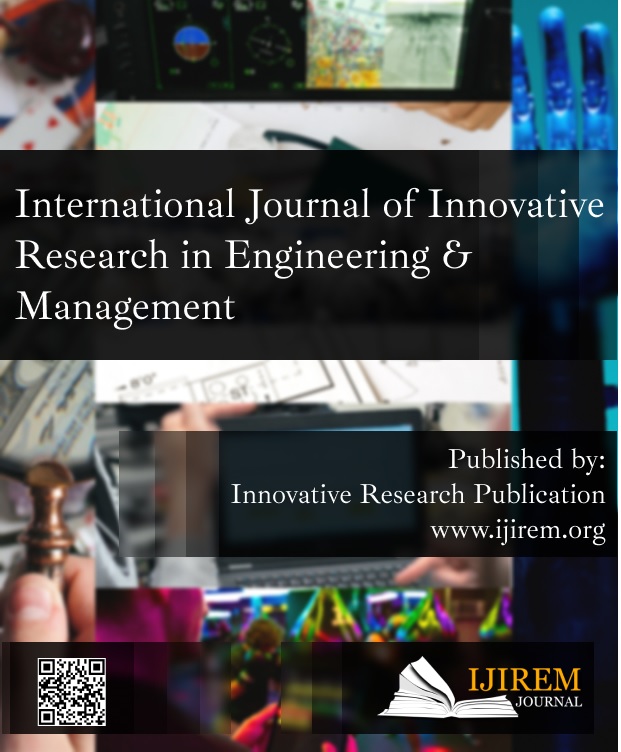Customized Investment Plans Using CAPM and HRP
Keywords:
AI/ML, Portfolio, RNN (Recurrent Neural Network), OHLC (Open-High-Low-Close) chart, Linear Regression (LR), STD_DEV (Standard Deviation) Random Forest (RF), Deep Neural Network (DNN), Genetic Algorithm (GA), Genetic Algorithm (GA) Long Short Term Memory (LSTM), Prophet, P/E ratio, D/E ratio, CAPM, Black-Litterman, Hierarchical Risk ParityAbstract
During the past few months, a lot of people, mostly millennials, have begun to invest money as they have realized its importance and power. An investment in the right combination of stock can go a long way. In the current scenario, the new investors are playing it smart by choosing safe options like mutual funds. But in reality, a diversified portfolio, though a little riskier than the former, guarantees better returns. Our project is based on helping these investors make wise decisions as per their requirements and make sure they receive the maximum returns given their preferred level of risk. We plan on making this process of making a portfolio easy for these investors. The market that is being considered is National Stock Exchange (NSE). The stocks that will be examined will be those enlisted in the NSE. We will be predicting the stock growth using appropriate methods and using this data for further steps. The stock growth prediction has been done using multiple approaches. Seeking the user’s point of view is extremely important if we want to build a customized portfolio, hence he/she will have to take a small quiz to throw some light on his/her expectations from the portfolio. The portfolio will be built based on the user preferences. Following this, risk minimization will be done using various methods. The agenda is to produce a portfolio that gives maximum returns for the specified risk level. The project has been programmed in Python using a number of libraries and extensions. This project is still in the research and testing stages. It is highly recommended not to take the following findings as investment advice.
Downloads
References
Marc Velay and Fabrice Danie. 2018. Stock chart pattern recognition with deep learning, Artificial Intelligence Department of Lusis, Paris, France fabrice.daniel@lusis.fr http://www.lusis.fr(June .2018)
Mark KY Mak1 and WH Ip2. 2017. An exploratory study of investment behaviour of investors- International Journal of Engineering Business Management,vol. 9, ª The Author(s), (Jan 2017), 1-12, DOI=10.1177/1847979017711520
Giorgio de Santis and Bruno Gerard. International Asset Pricing and Portfolio Diversification with Time-Varying
Risk, The Journal of Finance, Wiley Vol. 52, No. 5, (Dec 1997), 1881-1912
Tavel Hyeong Kyu Choi. Stock Price Correlation Coefficient Prediction with ARIMA-LSTM Hybrid Model, B.A Student Dept. of Business Administration Korea University Seoul, Korea imhgchoi@korea.ac.kr ,arXiv:1808.01560v5 [cs.CE], (1 Oct 2018).
XingYu Fu, JinHong Du, YiFeng Guo, MingWen Liu, Tao Dong, XiuWen Duan. A Machine Learning Framework for Stock Selection, Likelihood Technology, ShiningMidas Private Fund, Sun Yat-sen University, arXiv:1806.01743v2 [q-fin.PM], (8 Aug 2018).
Forman Harry Markowitz The Rand Corporation. Portfolio Selection, The Journal of Finance, Wiley, Vol. 7, No. 1 (Mar., 1952), 77-91.
Aditya Vyas. The Hierarchical Risk Parity Algorithm: An Introduction.
Aditya Vyas. Bayesian Portfolio Optimization: Introducing the Black-Litterman Model.
Types of Portfolio Investment, Angel One (13th Nov, 2022).
How many stocks should you have in your portfolio, Finology Blog (4th June, 2021).
How to compare stocks of same sector? Team Groww, (24th Nov, 2021).
